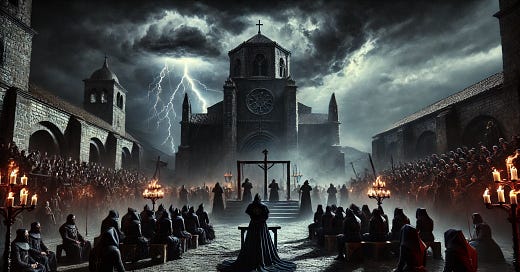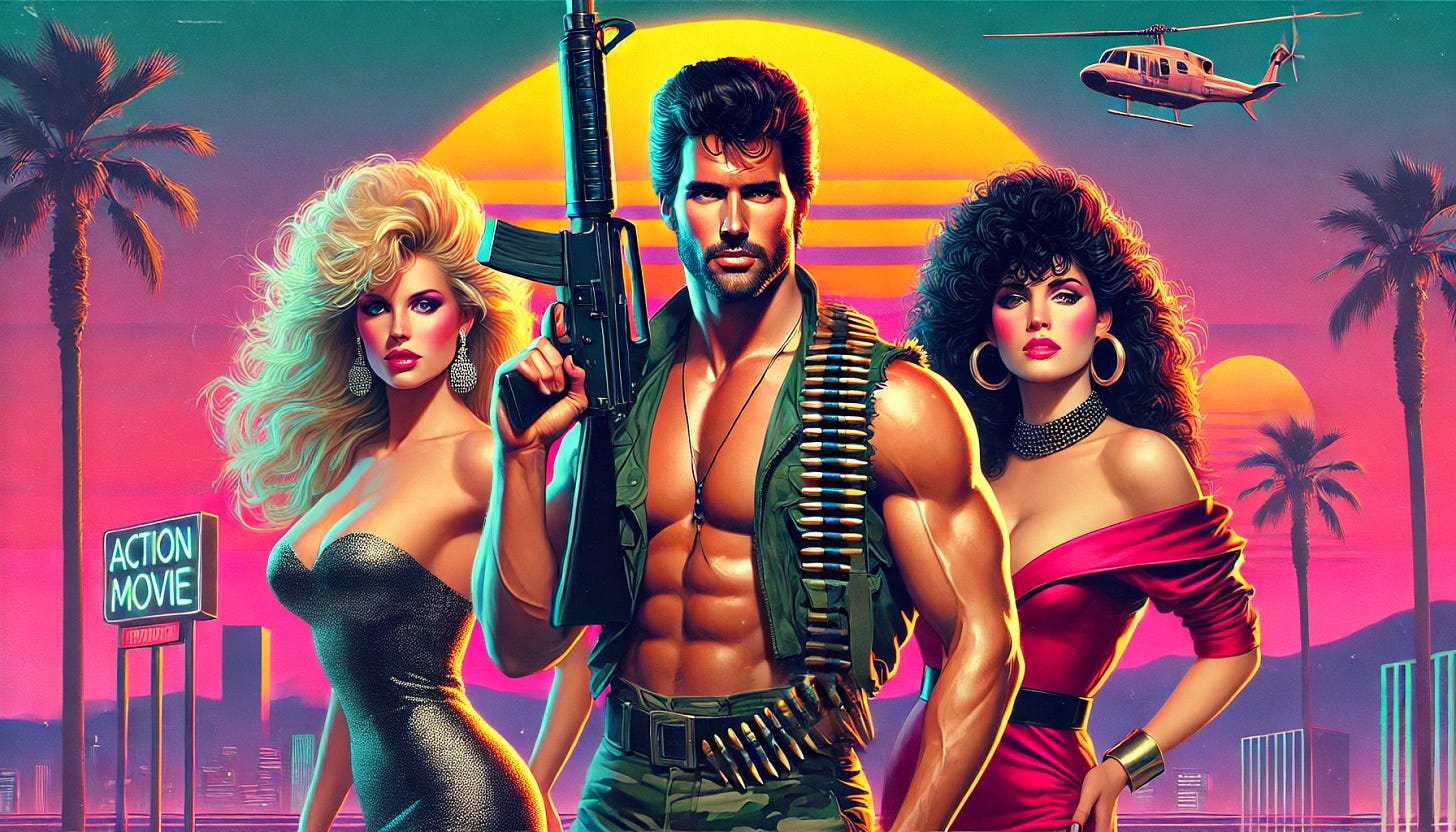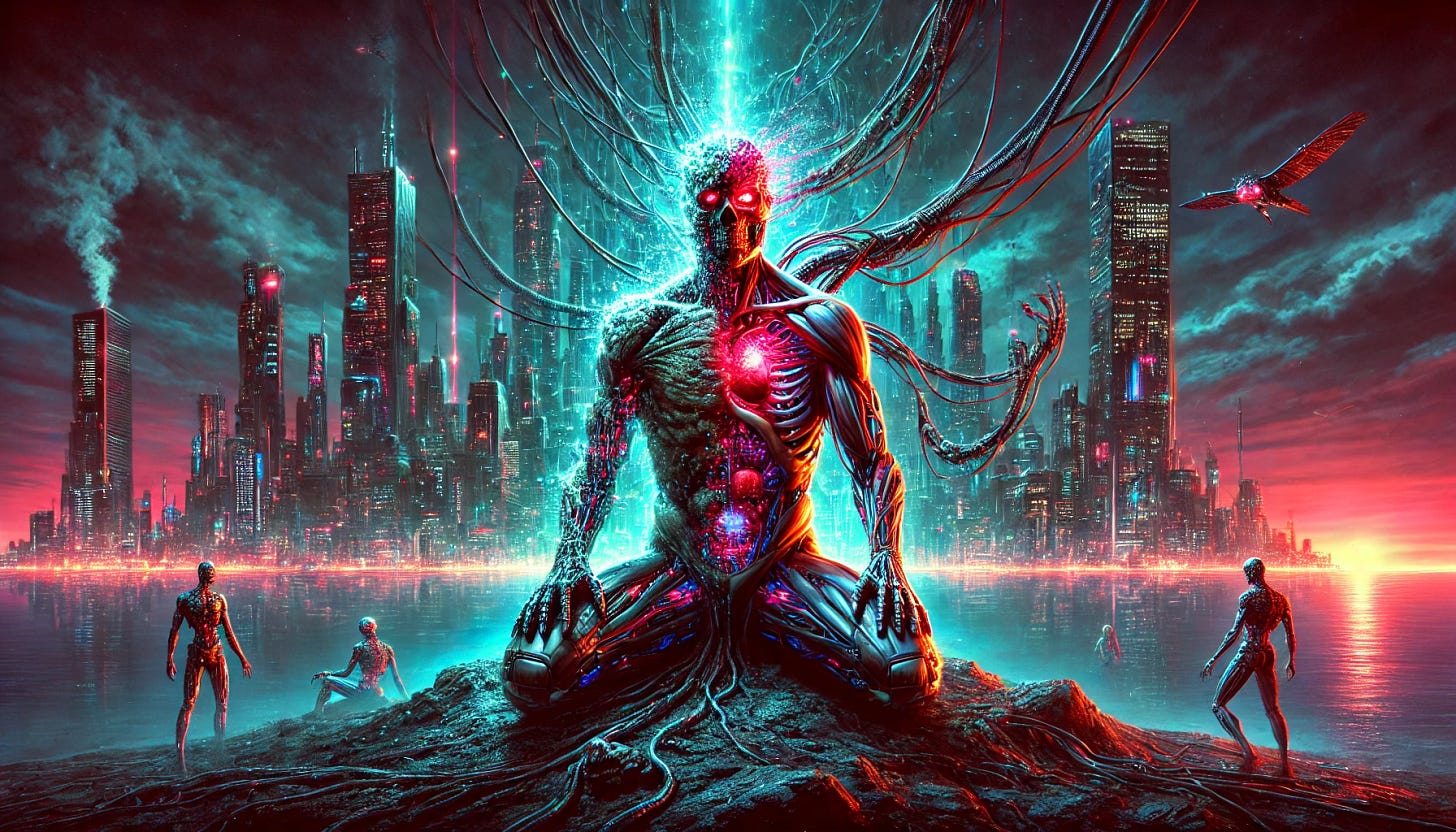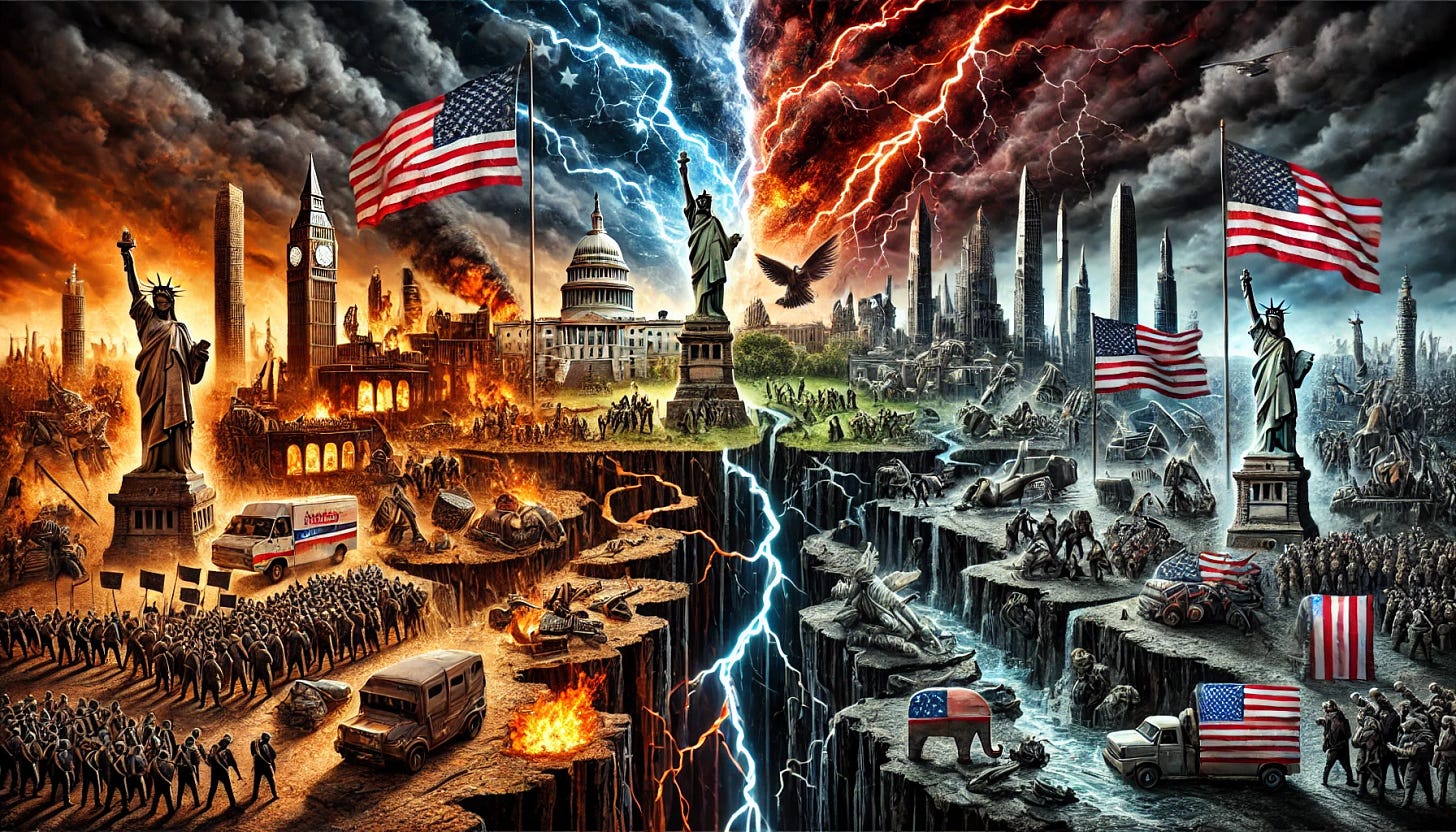The idea that atheists would ever need a mythology is so counterintuitive to many of us. It seems like everywhere we look there are problems caused by dogmatic people. These are the people who place far too much stock in mythologies rather than science, reason, and rationality. Mythologies, almost by definition, seem to rip us away from the world. With the well-worn metal boot of irrational justification they kick us into the closet of violence, close-mindedness, and ignorance. As Voltaire said, “those who can make you believe absurdities can make you commit atrocities.”1
If you prefer youtube, please click this sentence.
In my last two articles I’ve talked about the necessity of a personal myth, a personal story that gives your life meaning2. I’ll be summarizing the entire series at the end of this article. However, I’m primarily going to talk about the very real dangers of myth. Because, if a personal myth is necessary for the cultivation of meaning in life and the motivation to grow as a person, then we have to be aware of the very real dangers of myth that would prevent us from doing just that.
First and foremost among the dangers then, is the fact that myth is not science. Myth is not about having an accurate description or map of the world, that’s the domain of science. Instead, it’s about having an adaptive narrative about what one ought to do in the world, about what one ought to do with that scientific map. As such, this might include a narrative about science.
For example, if I say that science is the ultimate repository of capital T Truth, treating it as a library of indisputable knowledge, then I have created a narrative, a myth about science that is, ironically, extremely unscientific. If I say instead that science is an incredibly useful process for creating knowledge that tends to become more accurate over time, that is still a story about science, but it’s also one that is far, far more useful.
So, point being, there is clearly a relation between myth and science, between story and fact, but they simply are not the same thing. This difference makes myth dangerous because myth can so easily become reified as “science”, as the one true Truth above all other truths. Again, the people who think of science as a collection of absolute knowledge about the world think they are being scientific, “look at the science, this study supports what I’m saying therefore it is the absolute truth and no one can ever question anything I say henceforth!” Look how easy it is for a myth, a story, about science to replace science and scientific thinking.
The obvious comment would be to say that this is all the evidence we need to get rid of myth. Stick to the scientific process so that we can actually get the facts, and be done with this myth nonsense! Well yeah as I’ve argued throughout this myth mini-series, we need our myths to stick to the facts, to be supported by our science. However, the moment we start talking about how we ought to use the data or what implications the data has for us as a people, we have suddenly brought myth into the realm of science.
And so obviously that might need some extra explaining. We can use the process of science to measure the effects of a chemotherapeutic cancer treatment vs. child sacrifice3. Despite my deep antipathy toward children, I have to follow what the scientific process reveals, which is likely that chemotherapy works better. However, what myth tells us is whether or not modern medicine ought to be something we value enough to invest our time, energy, and resources into it4.
There is nowhere written in the fabric of the objective material universe that says we should value medicine over child sacrifice. Really, the distinction between medicine and child sacrifice is itself mythological, some cultures practice child sacrifice precisely because they believed it had medicinal effects. And yet, with science, we can argue for why child sacrifice isn’t an effective medicine, whether we should view it as a medicine or not. So the idea that science is completely dissociated from myth, also isn’t that accurate. They clearly inform each other and that’s really the point.
Myth also certainly influences how we deliver science to people who might disagree with us. Time and time again we’ve learned that telling people about the facts just isn’t enough to convince them of the facts5, 6, 7. It takes a well-crafted story to get someone to care enough about those facts to even consider whether or not they should start believing in them. Again, the danger of myth occurs when science is replaced by myth, but we still need myth in order to motivate people to care about science, and really, to even know what we should be using science for.
The Danger of Archetypal Reification
I think the idea that story matters in the delivery of science connects us quite nicely to Ellis’ theory of archetypes that I introduced in my last article8. I won’t go into much detail so you can check it out there. Briefly though, archetypes are symbols or images that help maintain meaningful inspiration over time and can be divided into four categories. Two examples are heroic archetypes that motivate us toward goals and shadow archetypes for threats. The idea is that certain symbols can better activate certain emotions and concepts that motivate people to achieve goals or to identify and eliminate threats.
The danger with the idea of archetypes is, again, reification, believing that they are absolute truths that are universal regardless of cultural context. For example, a Hero archetype might be the Arnold Schwarzenegger hyper-masculine hero. He represents the ideal that every man living in the 80s should achieve, but obviously there was a lack of emotional intelligence, he was on steroids, he treats women like sexual objects, solves every problem with intimidation or outright violence, etc., etc. Sure he represented a vision of the ideal man, but there were also a lot of issues embedded within that ideal that are toxic and can actually make your life worse.
Now, I realize that’s a big topic that I’m not going to address in this article, but my point is that this archetype, this symbol of masculinity and the definition of masculinity that it provides, often become reified. They become the absolute, only definition of masculinity that we can have. This reification of archetypes is also known as archetypal projection. This is a myth about who men ought to be and if you question it you’re a pussy, you’re a beta male, you’re a cuck. In short, you are a bad person if you defy the rules of the myth. This is the danger of myth. The symbols that they use to represent values, ethics, and ideals, in this case who men ought to be, are taken to be the ultimate rules that can never be questioned.
We need myth to be able to guide us, to define what we value, and we need archetypes to be able to represent those values, to energize us toward the achievement of our goals over the long-term. However, we always have to remember that an archetype is merely a symbol and not the ultimate truth. The archetype is not scientific, it does not reflect the world as it actually is. It is instead a culturally-dependent symbol that should be updated over time as we realize that the symbol is ineffective or, downright toxic.
Another example of this is discussed in Ellis’ book, Archetypes in Religion and Beyond8, where he discusses the difference between the heroes Robin Hood and Henry V. One hero defies authority and power by stealing from the rich and giving to the poor, while the other the hero is authority and power and inspires its people to go to battle against the French. Either myth had its uses for motivating the people toward certain goals, and so they were both heroes, but they were very different types of heroes.
What really marks the Hero archetype is the ability to transcend the conformity of the day, bring back lessons to that conformity, and improve and update what people conform to. For more on conformity you can check out my article, “The Conformist Cage of the Nice Guy.” You can also find ways to apply this information in my free assignments.
Returning to the Arnold Schwarzenegger Hero, that may have been a very effective way to motivate men to achieve, but it may not motivate men to achieve the healthiest goals that make the world a better place. Death and violence is not what we need, but if we worship at that altar we can’t be surprised if that’s what we get. And that’s precisely what an archetype is. No matter what the archetype is, whether it’s a Heroic archetype or one of the other archetypes, if you are using that archetype to motivate yourself toward certain goals, you are worshipping that archetype. If you assume that this archetype is the absolute truth, then you are worshipping a deity that you cannot question.
Iterative Myth and Broken Epistemology
Which, of course, leads me to the next danger of myth – the fact that a reified myth prevents itself from becoming updated. Again, if you assume that the myth represents the absolute truth about reality, then how can you update it? If your God is the one true God, then how can you question the holy text when it says something unethical, unscientific, or just downright dangerous? Again, myth is not science, and so the truths that it reveals are truths about what one ought to do. Given the environment you currently live in, you need to be motivated to achieve a certain goal by a certain archetype, but the moment the environment changes then your archetypes and your myth must also change.
If we’ve reified Arnold Schwarzenegger as the pinnacle of masculinity then we’ve prevented masculinity from ever changing. Again, if the environment changes then we must also change. If you refuse to change to fit the environment then you are standing for a utopian ideal. You believe that your ideal can answer any problem the environment throws at you. Is it really likely that any ideal you have is eternally valid and effective in every single possible context that could ever possibly exist? Of course not, and so that means your myth must be updated.
There needs to be an iterative myth that adapts itself to changes in the environment, and thus, it must have an iterative ethics that also updates itself as the times change. No moral philosopher who existed 200 years ago could ever prepare us for the advent of social media and the internet. Some theorists go so far as to say that this is an entirely new layer of reality in the same way that life was a completely different type of reality relative to dead matter, or that human culture was to other animals9, 10. When entirely new layers of reality come into existence, then yeah, maybe we should consider having a belief system and mythological system that is iterative, rather than this absolutistic thinking where we have all the answers to every possible situation until the end of time.
This is also related to another issue with myth, the fact that myth often has a broken epistemology, which basically just means our process for creating knowledge. Once you’ve conflated your myth with science, you’ve absolutized your symbols as the final symbol that represents all one should ever aim for, and then ossified your mythology to prevent it from ever updating, you now are completely incapable of really learning anything about the world. Every new piece of information that you come across is violently filtered through the lens of your myth. If you can make it fit then great, perfect, but if you can’t then you have to blind yourself to that new information by saying you know, the devil put fossils in the ground to confuse us or something like that.
And just to reconnect this with the idea that there are myths of science, we know this happens as well. Kuhn’s work on scientific revolutions demonstrates Max Planck’s quote that science progresses one funeral at a time11. Science does make progress, but often a whole body of knowledge emerges with a myth or story about that body of knowledge. Then, when new science comes in that pokes holes in that body of knowledge, many scientists are resistant at first. Then the old guard dies out, and this makes room for the new ideas to emerge and grow, and then there is a shift in the scientific community. And then, that process repeats.
So science definitely has the iterative part down better than traditional religion, it updates over time, but there is often a certain level of absolutizing that also happens, there is resistance to the updates. Fortunately, because it is iterative, we may come to a place one day where this ossification in our bodies of knowledge is far less likely. Obviously we want a give and take between holding on to tradition and updating, so we’ll get better at maintaining a healthy balance.
But point being, we not only need an iterative science that can update our body of knowledge, but we also need an iterative myth about that knowledge. As I said before, I can gather new data that updates my model of the world, but the myth I live that tells me what to use that data for also needs to change.
Another example of a “scientific” myth is the one about transhumanism as the next stage of human evolution. It states that we need to completely replace our biological forms and upload our consciousness to the digital world. The fact is that we don’t even know if that’s possible, and yet many “scientific” people will take new events in regards to technology, science, politics, etc., and interpret them with their myth of transhumanistic digital consciousness. Again, we have no idea if this is possible, and so it definitely is a very scientific myth, but a myth nonetheless.
Elsewhere, visions of AI utopias and dystopias are also examples of scientific myths. If you’re so caught up in the myth of AI utopia you’re far more likely to disregard or diminish the need for funding and researching AI risk. That is a myth that is influencing how you do science that is potentially extraordinarily dangerous.
Again, even with these very “scientific” myths, there is the risk that they will run away with themselves, ripping themselves and us away from reality, from here-and-now, and then by their very “logic” prevent us from ever questioning the myth. Don’t talk about AI risk because then we won’t get any AI! Do you see how much of a moral imperative there is in that statement? It’s not just that you shouldn’t talk about AI risk, it’s that you are preventing the very salvation of the human species by daring to talk badly about our holy AI! Purely mythological, purely mythological.
The Dangers of No Myth
And yet, we can’t just get rid of myth because we are always telling ourselves stories about ourselves, about our world, and about what we should do given those stories. In many ways we can think of ourselves as a narrativizing species4. So with that being said then, however tightly we may tether our myths to science they are still myths and there will always be dangers associated with those myths. But again, without any myth whatsoever we’re cast into an ocean of infinite possibility without any solid, understandable origin, let alone a beneficial destination. Myth consists of the meanings that structure our lives and so we are always living a myth of some sort, which speaks to the need for a personal mythology12.
I’ve already outlined the arguments for why you need a personal myth in prior articles, and I’ll summarize that in a moment, but we are always telling ourselves stories and we are always being sent this way and that by archetypes. We watch an action movie and we’re being energized in a certain way based on who the heroes are and what they represent. We browse the internet and are constantly bombarded by images and advertisements that do the same. The solution cannot be to remove myth altogether because that just leaves us without any story of our own making, and thus, perpetually falling into the myths spun up by other people.
Vervaeke et al. (2017) connect this loss of myth with the rise of pseudo-religious ideologies such as communism and fascism, and I would say MAGA as well13. These ideologies consist of stories about who you are as a person, about other people, the world, and how you ought to engage in the world, and yet these ideologies become increasingly ungrounded and torn away from the world. When we don’t have a myth to live by, we are far more likely to get spun up into such pseudo-myths because we’re looking for something to structure our lives around. Other people get spun up into mindless pursuits of pleasure or fandoms that become increasingly toxic as they come to define more and more of their fanbases lives.
When mythologies work well they are meant to adapt us to the world, to help us become better people who can navigate our world better. In an age of mythological deconstruction and pseudo-myth, we are left without any healthy myths. As I’ve argued throughout this series, this is exactly why we need to start creating our own personal myths.
So to summarize this entire mini-series on personal myth, the key points follow:
A myth is an adaptive story. It helps us understand our past, our life narrative, in a way that gives us reasons for being here that matter to us. It helps us understand our present world, and the people we share it with, so that we can better navigate that world and interact with those people. And finally, this myth helps us envision a desired future and work toward that future.
As such, personal myth also must have an archetypal component. To remind you, archetypes are symbols that maintain meaningful inspiration over time. We are constantly being bombarded by symbols that influence our beliefs and emotions. If want a personal myth that is actually adaptive, that can actually help us become better people, then we need to investigate the archetypes we are currently living by, integrate these archetypes, and then evolve them into archetypes that motivate us in far healthier ways toward far healthier ends.
Finally, we need to be aware of the dangers of myth for the simple reason that myth is not science. Myths are not necessarily about having an accurate description of reality, but about having a useful story for taking action in reality. As such, despite their absolute necessity and profound usefulness, they are prone to tear us away from reality if they become too untethered from the scientific process. The solution is to have an iterative myth that is grounded in the scientific method, and most importantly, is aware that it is a myth.
As I said in the last article, a large part of this channel will be about sharing the theory of masculinity, psychological development, and the cultivation of your own personal mythology. In that process I will be articulating my own personal myth as an example. You can use it if you connect with it, or adapt it and evolve it in a way that helps you become more adaptive according to your own values.
In the next article, I’m going to be going over a life narrative to demonstrate how we as men are given a myth about masculinity, and at the end I’ll offer a framework that can help you rewrite a far better personal myth for your masculinity and for your life. This will be my definition of MetaMasculine, so please stay tuned for that.
Either way, that is enough for today. Thank you so much for your time and attention. Please hit the like button and subscribe for more article and conversations that go very deeply into masculinity, psychological development, and the cultivation of a meaningful personal mythology. Thanks again, and all the best to you on whatever journey you find yourself on.
References:
1 – A quote by Voltaire. (n.d.). Retrieved August 19, 2024, from https://www.goodreads.com/quotes/20527-those-who-can-make-you-believe-absurdities-can-make-you
2 – Cameron, W. (2024, August 4). The Evolutionary Necessity of Myth [Substack newsletter]. MetaMasculine. https://metamasculine.substack.com/p/the-evolutionary-necessity-of-myth; Cameron, W. (2024, August 17). Why Atheists Need Mythology [Substack newsletter]. MetaMasculine. https://metamasculine.substack.com/p/why-atheists-need-mythology
3 – Where child sacrifice is a business. (2011, October 11). BBC News. https://www.bbc.com/news/world-africa-15255357
4 – Peterson, J. B. (1999). Maps of Meaning: The Architecture of Belief (1st edition). Routledge.
5 – Discussing what matters when facts are not enough. (2018, March 9). https://www.sciencenews.org/article/discussing-what-matters-when-facts-are-not-enough
6 – Nyhan, B., Reifler, J., & Ubel, P. A. (2013). The Hazards of Correcting Myths About Health Care Reform. Medical Care, 51(2), 127. https://doi.org/10.1097/MLR.0b013e318279486b
7 – Bouchrika, I. (2021, February 28). Why Facts Don’t Change Our Minds and Beliefs Are so Hard to Change in 2024? Research.Com. https://research.com/education/why-facts-dont-change-our-mind
8 – Ellis, R. M. (2022). Archetypes in Religion and Beyond: A Practical Theory of Human Integration and Inspiration. Equinox Publishing.
9 – Henriques, G. (2023). A New Synthesis for Solving the Problem of Psychology: Addressing the Enlightenment Gap (2022 ed. edition). Palgrave Macmillan.
10 – Moon, S. A., & Dempsey, B. G. (2021). Building the Cathedral: Answering the Meaning Crisis through Personal Myth; 9798728831211.
11 – Kuhn, T. S. (1996). The Structure of Scientific Revolutions (3rd edition). University of Chicago Press.
12 – Bond, D. S. S. (2001). Living Myth: Personal Meaning as a Way of Life. Shambhala.
13 – Vervaeke, J., Mastropietro, C., & Miscevic, F. (2017). Zombies in Western Culture: A Twenty-First Century Crisis: Vervaeke, John, Mastropietro, Christopher, Miscevic, Filip: 9781783743285.







